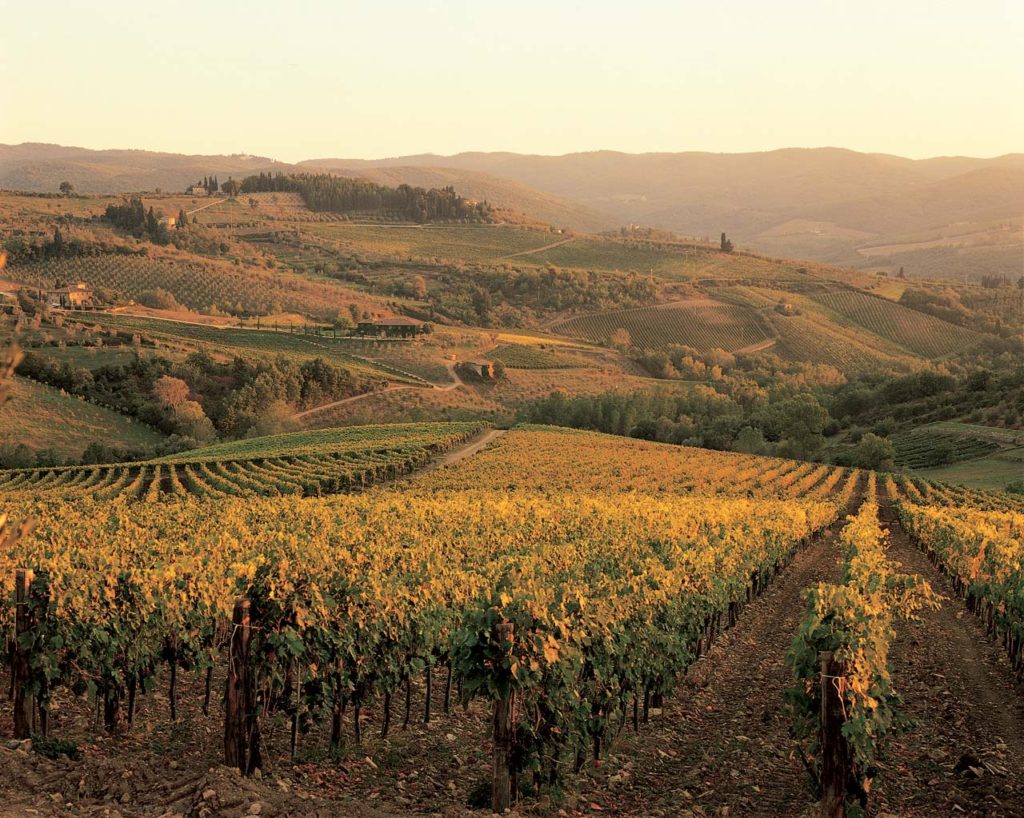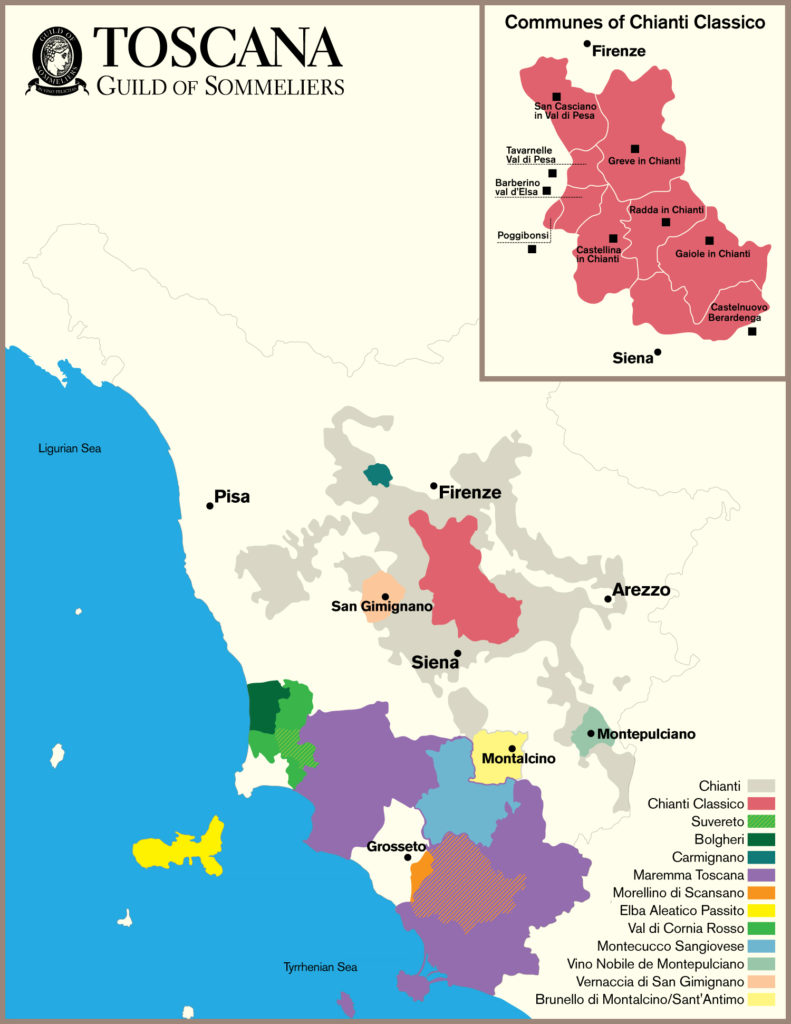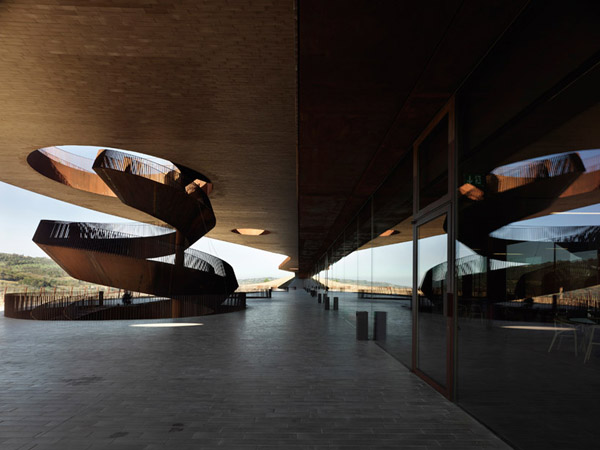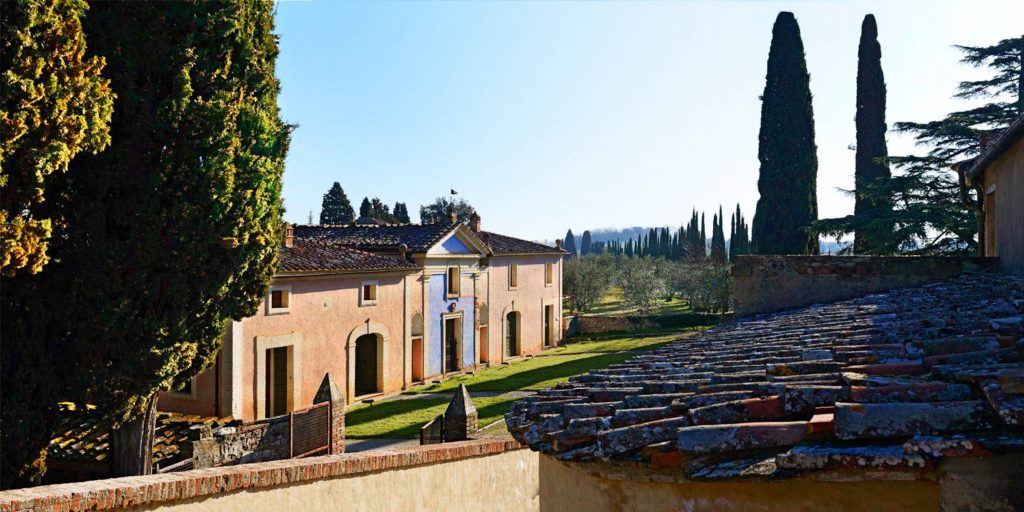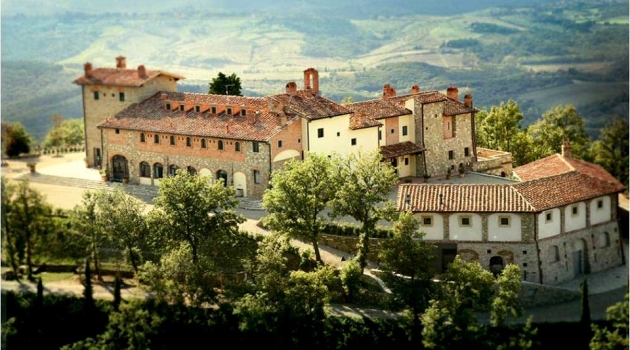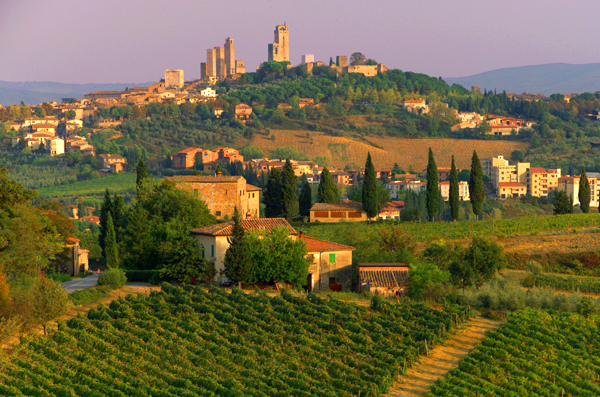Around the time tea was being introduced to the American colonies (1714) by the English and the Ottoman empire was caught in a savage war with Russia, a restless traveler, the sixth grand duke of Tuscany Cosimo III de’ Medici literally put Chianti on the world wine map by demarcating the world’s first “wine territory”.
Today, the 24th September 2016 marks 300 years of fine wine-making for the home of Italy’s most famous indigenous grape – Sangiovese. Reckon it’s a good day to spread some Sangiovese love with a glass of Chianti nearby.
In honor of this momentous occasion, Consorzio Vino Chianti Classico has created a new logo which will appear on each bottle of Chianti Classico shared during the 300th anniversary celebrations.
Petulant princess Sangiovese along it’s slew of synonyms Morellino on the Tuscan coast, Brunello in Montalcino, Prugnello and Prugnello Gentile in Montepulciano, Nielluccio on Corsica, and Toustain in Algeria has been documented as early as 1590 by Gonfaloniere of Justice and ambassador to France Piero Soderini. A good Sangiovese exudes intoxicating aromas of sour red cherries, red berries, licorice, and tea, unraveling leather and tobacco with age. Rich in malvin and cyanin, virtually devoid of acylated anthocyanins (stable pigments) Sangiovese based wine like Nebbiolo lean towards lighter red hues. Sangiovese thrives on the crumbly marl-like galestro soils and alberese or sandstone.
Like Pinot Noir, Italy’s most abundant red varietal is highly subject to permutation in the vineyard. With a whopping 102 different clones registered in the Italian National Registry, there is bound to be trouble under the Tuscan sun. Necessity the mother of invention invoked Chianti Classico Consortium to launch the “Chianti Classico 2000” Project in 1998, (perhaps the world’s most ambitious clonal research).
Chianti Classico DOCG, the heart and soul of Chianti zone, permits 100% sangiovese or a minimum of 80% blended with other red grapes (natives Colorino and Canaiolo, international Cabernet Sauvignon and more). Since 2006 white grapes are no longer permitted in the wine. The original Chianti recipe (1873) by it’s inventor Bettino Riscasoli called for seven parts Sangiovese, two parts Canaiolo Nero, and one part Malvasia Bianca Lunga. The minimum alcohol level for Chianti Classico is 12% and the wines must be aged for a year prior to release. Riserva wines must be aged for a minimum 24 months, with a minimum 12.5% alcohol level; Gran Selezione wines—a new category introduced in 2013—must be aged for at least 30 months prior to release. traditionally treated in Slovenian large casks called botti, to appeal to an international market, producers have embraced new oak and french barrels.
One can not possibly speak about Sangiovese without mentioning the power packed expression of Sangiovese, the sole grape of Brunello di Montalcino where Brunello is released five years after the harvest and the Riserva requires an extra year of cellar aging. Or the super heros ‘Super Tuscan‘ from Bolgheri. Both merit separate stories.
Sangiovese also shines in the DOCG wines of: Chianti, Carmignano (50% Sangiovese), Vino Nobile di Montepulciano where made with the Prugnolo Gentile clone. The wine is minimum 70% Sangiovese with native grapes Canaiolo Nero and Mammolo in supporting role. Morellino di Scansano where Morellino is the local name for Sangiovese, minimum 85% Sangiovese, and Montecucco Sangiovese.
Chianti has come a long way from it’s dark days of cheap fiasco bottles and red checkered tablecloths. The Tuscan wine industry has not just reverted back to it’s glorious days, it is producing supremely scintillating wines ranging from dry to passito (Occhio di Pernice Vin Santo) styles.
Benchmark producers of Sangivoese not limited to Chianti Classico are: Antinori an icon of legendary Italian wines. Princess Coralia Pignatelli della Leonessa’s historic estate Castell’in Villa. Fattoria di Fèlsina‘s Tuscan estate has won the coveted Tre Bicchieri award 17 times. Renowned for its Super Tuscan Flaccianello Fontodi’s prized amphitheater vines are located on Conca d’Oro” (the golden shell). Isole e Olena by Piedmonte Proprietor Paolo De Marchi produces elegant and earthy examples of Sangiovese. Badia a Coltibuono or “The Abbey of good harvest, a former monastery in it’s previous life converted into a hotel also housing a wine shop and restaurant. Ruffina a name synonymous with traditional style Chianti ranging from their flagship Riserva Ducale, to whites from Pinot Grigio and Chardonnay, and sparkling from Glera and Pinot Noir.
Brunellos by the legendary estate of Biondi-Santi, Poggio Antico, and Soldera. Castellare super tuscans with a loyal international following. San Giusto a Rentennano Percarlo though an IGT made from their estate in Gaiole, 100% monovarietal is truly a hidden gem. Montevertine although not Chianti Classico, the 100% sangiovese – Le Pergole torte is a show-stopper. Etheral Elisabetta Fagiuoli’s wines of Montenidoli.
Toscano to the Italians, Tuscany is the land of Renaissance, marriage of modern and old world charm, a for exquisite food and world-class wines, burnt-orange vistas, rust-colored hills, pristine and picturesque landscapes, charming trattorias and pizzerias, simply a place to fall in love!
Tuscans, like rest of Italy eat what’s in season, and the best stuff ripens between October and March. Fall and winter, is eating season in Tuscany: big red wines, mushrooms, black truffles, chestnuts, and hearty pastas with meat sauce. Which better grape than greatest red grapes of Italy, Sangiovese to slice through the substantial flavors of Italian food?
Tuscany’s, king pasta – pappardelle to nona’s tender pork ragu, glorious hunks of porterhouse, flame-licked to perfection, drizzled with woodsy rosemary oil served with quintessential Tuscan beans poached in citrusy olive oil, and grilled farmers market vegetables, are you drooling yet? From a fragrant red berry, approachable, juicy and bright flavors dancing around your glass for everyday drinking to brooding, savory, earthy powerful notes for serious scintillating conversation, held together by 300 years of fine wine-making, you will be hard pressed not to fall in love with Sangiovese all over again.
Buono compleanno e felice anniversario Chianti Classico!! Raising our glasses to the next 300 years.
Research: Jancis Robinson, Wine Anorak, Chateau Monty, Vinous, and Guild Somm.
